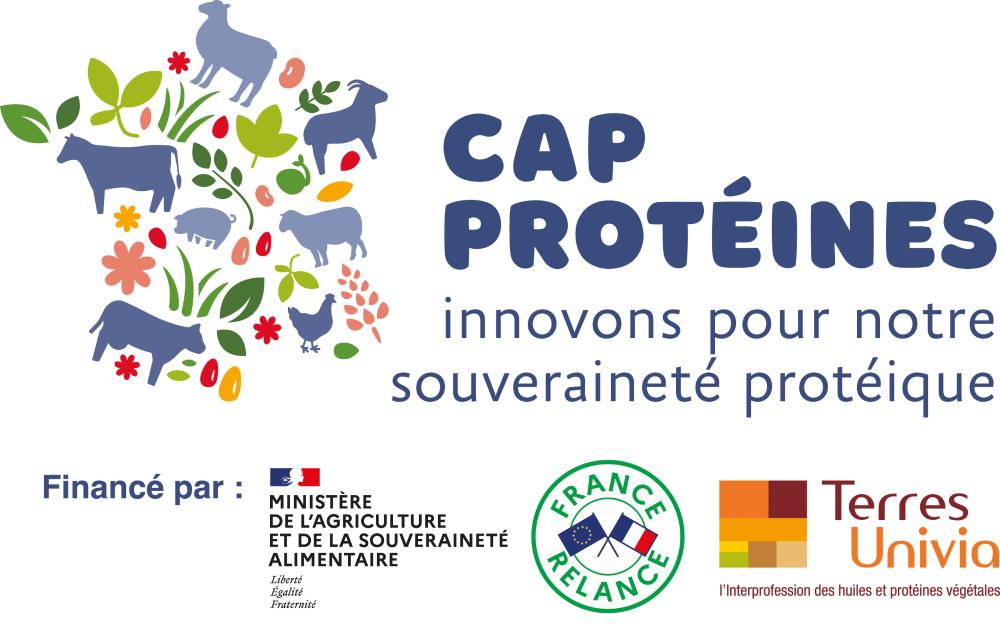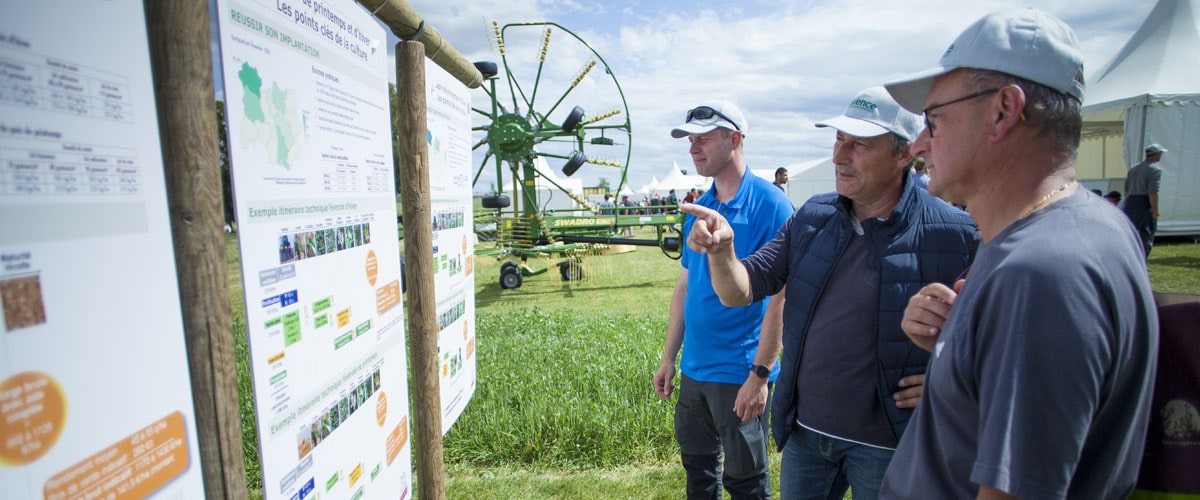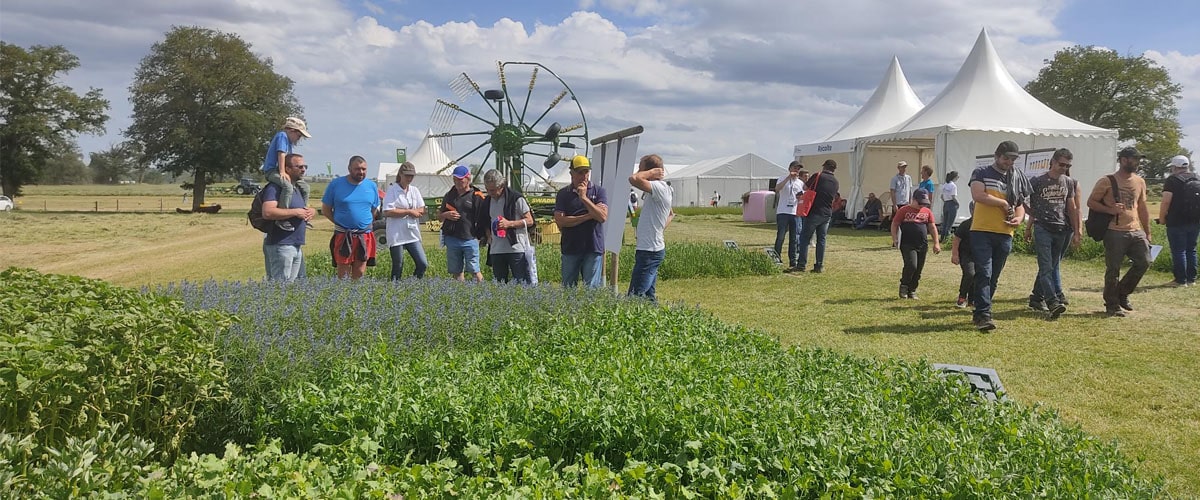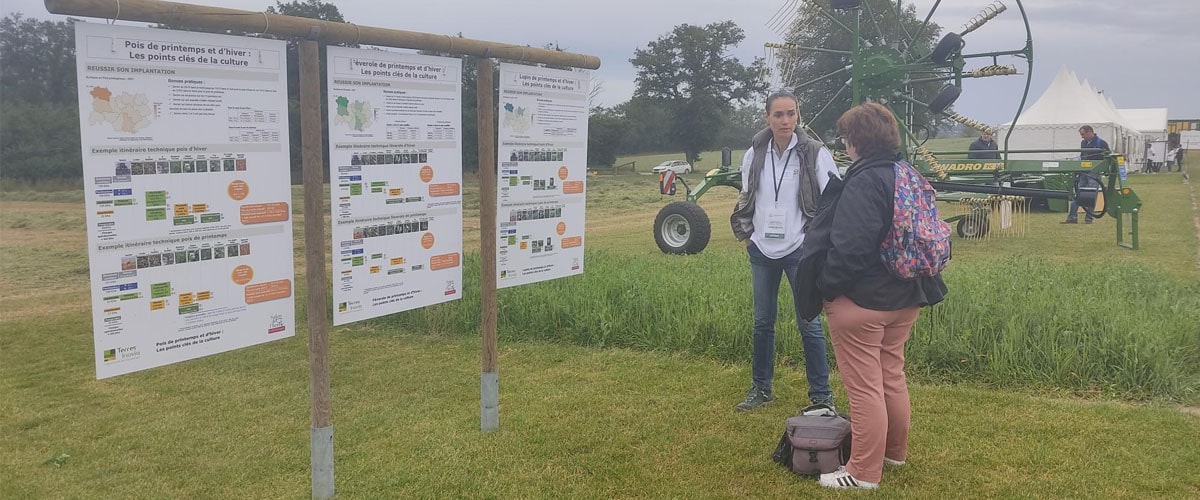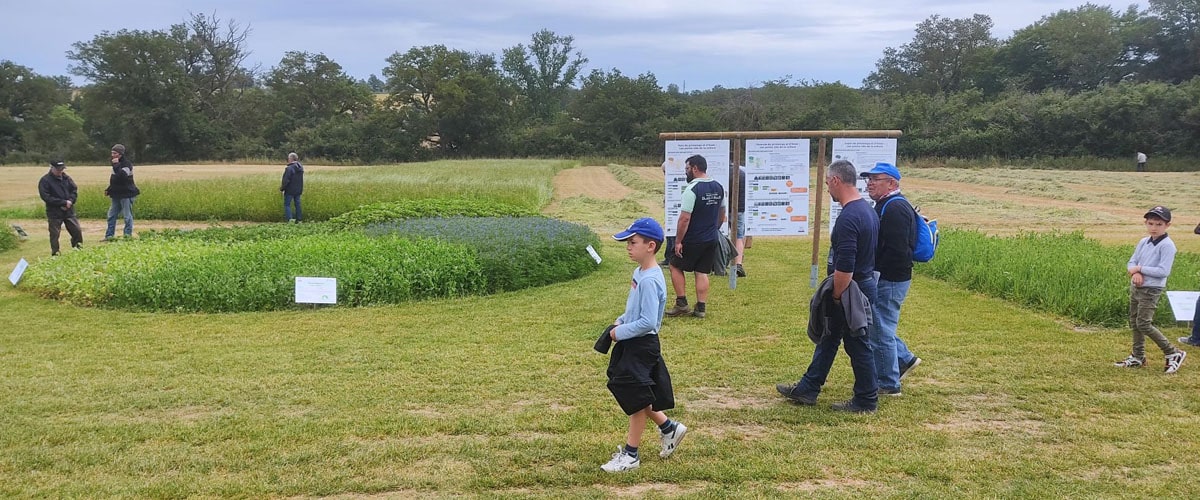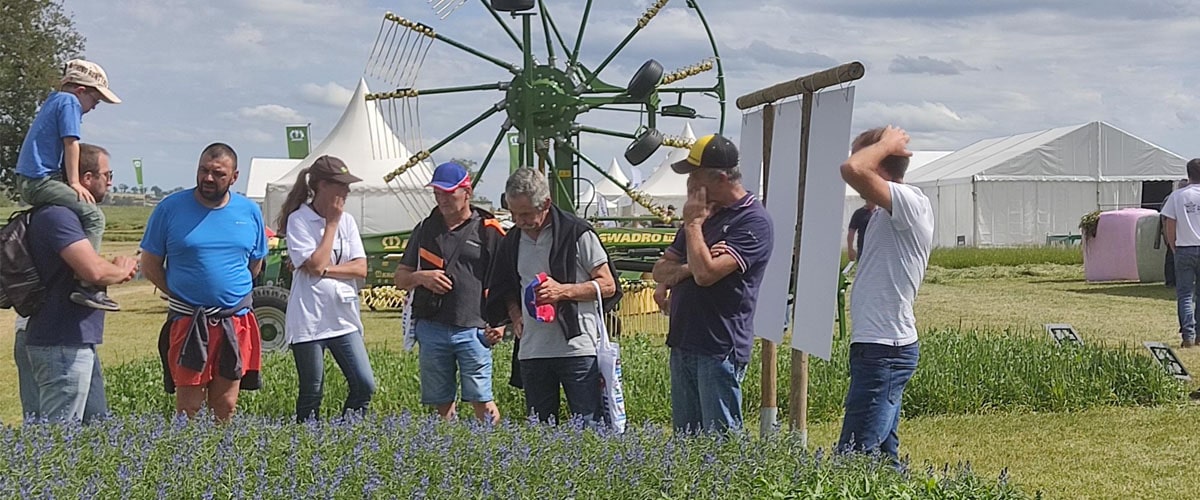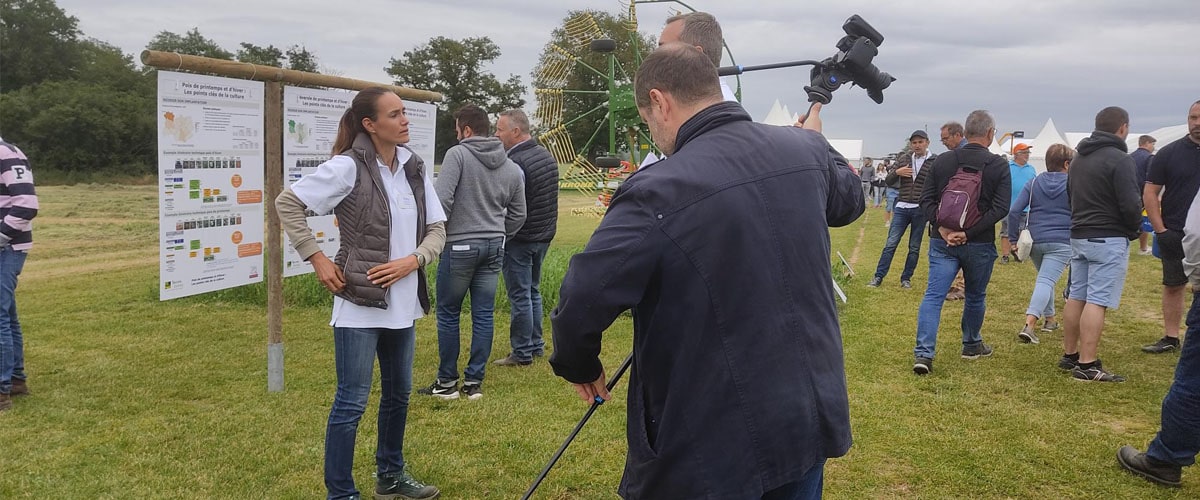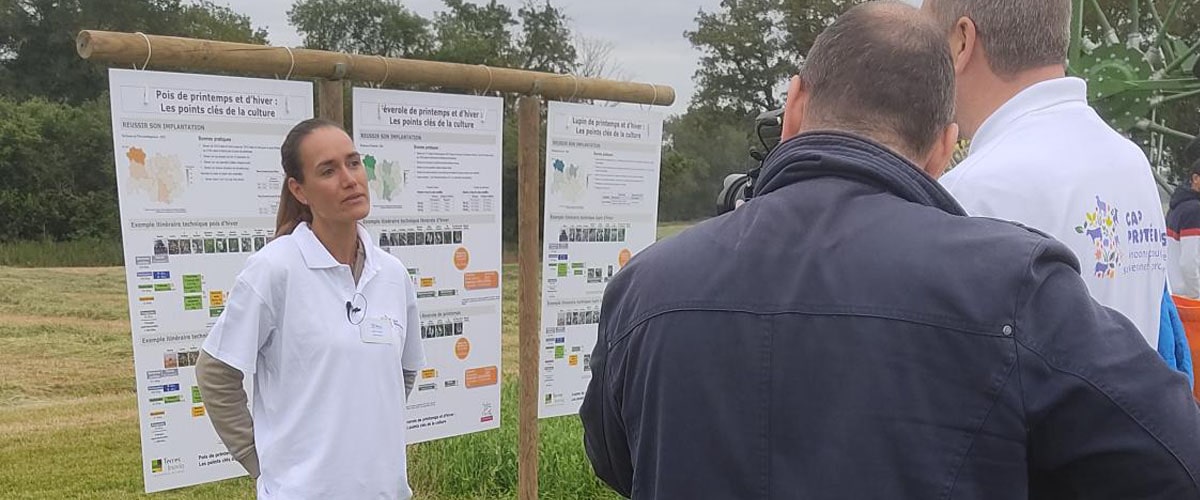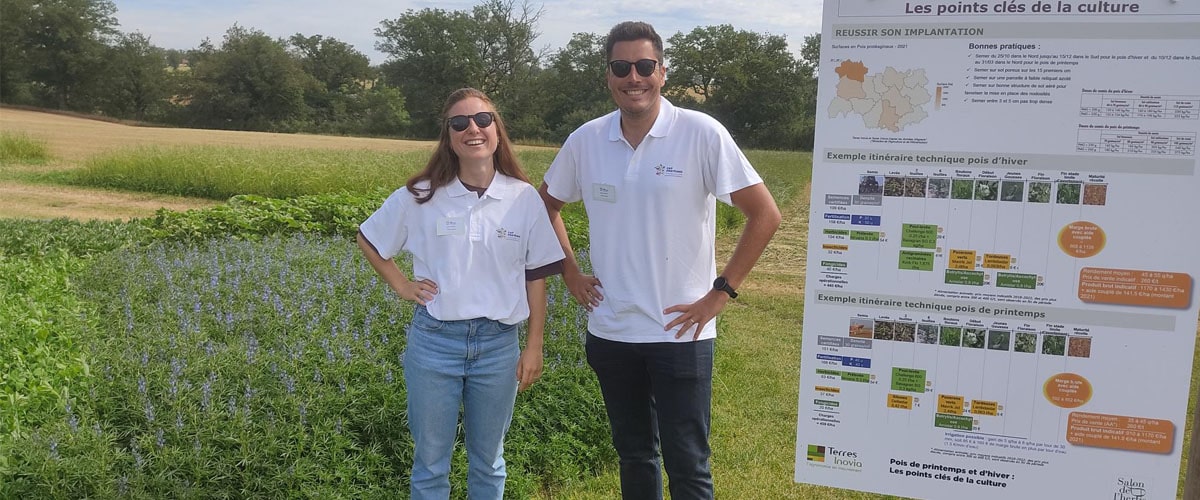Grass and Forage Fair: a showcase for Cap Protéines
Grass and Forage Fair: a showcase for Cap Protéines
At the beginning of June, Terres Inovia took part in the grass and forage show in Villefranche-d'Allier. Three experts from the institute had a "Species" stand in the village of protein and fodder autonomy in the colours of Cap Protéines. The purpose of this space was to present the interest and feasibility of seed protein crops, mainly peas, faba beans and lupins.
With more than 31,000 visitors, the Grass and Fodder Show held on June 1 and 2 was a great success. Terres Inovia was able to share its expertise on protein crops within the framework of a Cap Protéines village. As whole seeds, pea, faba bean and lupin are of interest in the feed ration of herds because of their high protein content. The technical itineraries of these crops were detailed with the help of posters and a crop showcase, in which 5 species were presented: spring blue lupin, spring pea, spring faba bean, rape and sunflower.
Farmers showed their interest on the spot by asking Terres Inovia experts (Laura Cipolla, Agathe Penant, Alexis Verniau). Farmers were attracted to and interested in these crops, particularly lupin, which is very advantageous in terms of protein content (up to twice that of a protein pea) and is unknown to most of them.
Securing the production of protein crops
Laura Cipolla also presented the main elements of the production context of the three protein crop species during a conference dedicated to the key points of technical itineraries. Indeed, "securing the production of protein crops remains the major problem in the context of their management: climatic impact, diseases, weediness. Pea, lupin and faba bean have relevant agronomic properties both at the scale of the cropping system and in terms of valuation.
For the record, pea is the most represented species in France with 245,792 ha in 2021 (source Terres Inovia and Terres Univia according to provisional data from Agreste (Ministry of Agriculture and Food)). The main protein crop production basins are New Aquitaine and Centre Val de Loire for peas and field beans, part of the Grand Est for peas, and Poitou-Charentes for lupins. In order to increase the protein content of the seeds, it is important to manage pests (sitones, aphids, root and aerial diseases), weediness (especially in lupins, which have less covering power), and to choose the right plot of land (pay attention to the level of limestone in lupins, hydromorphic soils in peas and acidic soils in faba beans).
Towards protein sovereignty on the French farm
A round table was also held on the first day of the exhibition. The theme was: "Towards protein sovereignty on the French farm, a credible and achievable objective? Four speakers presented their points of view: Jean-Marie Seronie, agro-economist; Jean-Pierre Fleury, suckler cattle farmer and former president of the National Bovine Federation (FNB); Dominique Viallard, independent dairy farmer from Puy-de-Dôme; and Laurent Rosso, director of Terres Inovia and Terres Univia.
We reviewed the feasibility and the issues at stake," he explains. An interesting avenue emerged from this discussion: to continue to develop advice to provide more robust solutions and boost the transfer of information to farmers. The pilot territories, one of the deliverables of Cap Protéines, contribute to the in-depth transformation of agricultural advice. The keys to success have been identified: work over time, use all the levers including the political aspect, strengthen actions and the ability to develop advice in complex systems, like a great New Deal for French agricultural advice.
A vast programme that needs to be explored further.
